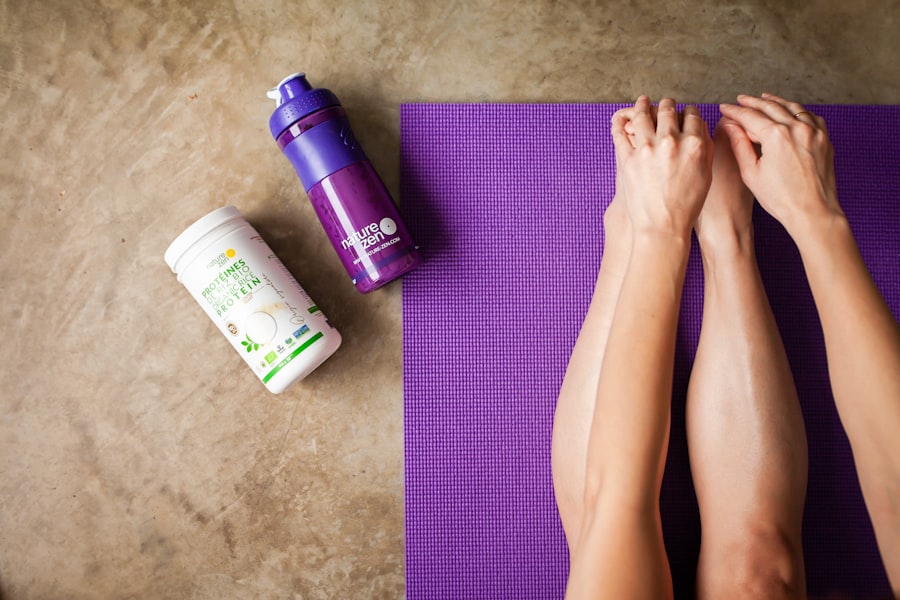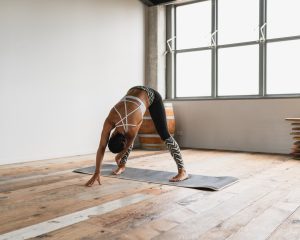Exploring the Benefits of Wall Yoga
Wall yoga is a specialized form of yoga that incorporates a wall as a prop to enhance various aspects of the practice. This method utilizes the wall’s support to improve alignment, posture, stability, balance, flexibility, and strength while promoting stress relief. The practice is accessible to practitioners of all skill levels, from novices to experienced yogis, providing a secure environment for exploration and development.
By integrating the wall into yoga routines, practitioners can achieve a more profound connection with their bodies and breath. The wall serves as a reference point for alignment, offering support and resistance to deepen the practice. This approach enables participants to focus on proper form and technique, potentially reducing the risk of injury and enhancing the overall benefits of yoga.
The use of a wall in yoga practice can be particularly beneficial for individuals with balance issues, injuries, or limited mobility. It allows for modifications of traditional poses, making them more accessible and comfortable. Additionally, wall yoga can help practitioners develop core strength, improve body awareness, and increase proprioception.
Wall yoga sessions may include a variety of poses and exercises, such as standing poses, inversions, backbends, and restorative postures. The wall provides a stable surface for practitioners to work against, allowing for a greater range of motion and the ability to hold poses for extended periods. This can lead to improved flexibility, muscle strength, and overall physical conditioning.
Key Takeaways
- Wall yoga is a practice that utilizes the support of a wall to enhance traditional yoga poses and deepen the practice.
- Improving alignment and posture is a key benefit of wall yoga, as the wall provides a reference point for proper positioning.
- Wall yoga helps enhance stability and balance by allowing practitioners to use the wall for support and to find their center of gravity.
- Deepening stretch and flexibility is achieved in wall yoga by using the wall to gently deepen stretches and explore new variations of poses.
- Building strength and endurance is a key component of wall yoga, as the wall provides resistance for certain poses and allows for longer holds.
Improving Alignment and Posture
Enhancing Stability and Balance

Another significant benefit of wall yoga is its ability to enhance stability and balance. The wall provides a stable and secure surface for practitioners to lean on, allowing them to explore challenging balancing poses with greater confidence and ease. This can be particularly beneficial for individuals who struggle with balance issues or are new to yoga, as the wall can provide a sense of safety and support while they build strength and stability in their practice.
By incorporating the wall into yoga practice, practitioners can also develop a greater awareness of their body’s center of gravity and learn how to engage the core muscles to maintain balance in various poses. This can have a positive impact on overall coordination and proprioception, leading to improved stability and balance both on and off the mat. Additionally, enhanced stability and balance can help to prevent falls and injuries, making wall yoga a valuable practice for individuals of all ages and abilities.
Deepening Stretch and Flexibility
| Exercise | Duration | Frequency |
|---|---|---|
| Forward Fold | 30 seconds | 3 times a week |
| Seated Forward Bend | 20 seconds | 5 times a week |
| Standing Quad Stretch | 25 seconds each leg | 4 times a week |
Wall yoga offers unique opportunities for deepening stretches and enhancing flexibility. By using the wall as a prop, practitioners can explore new variations of traditional yoga poses that allow for deeper stretches and increased range of motion. The wall provides support and resistance, allowing practitioners to safely explore their edge in each pose and gradually increase flexibility over time.
Incorporating the wall into yoga practice can also help to release tension and tightness in the body, particularly in areas such as the hips, hamstrings, shoulders, and spine. By using the wall as a support, practitioners can relax into stretches more fully, allowing for a greater release of tension and an increased sense of openness in the body. This can be especially beneficial for individuals who struggle with stiffness or limited mobility, as wall yoga can help to improve overall flexibility and range of motion.
Building Strength and Endurance
In addition to improving flexibility, wall yoga can also help to build strength and endurance in the body. The wall provides resistance for practitioners to push against, allowing them to engage muscles more deeply in each pose and develop greater strength over time. This can be particularly beneficial for individuals who are looking to build muscle tone or increase overall physical strength.
By incorporating the wall into yoga practice, practitioners can also explore new variations of traditional poses that require greater strength and stability. For example, using the wall for support in standing poses such as Warrior II or Tree pose can help practitioners to build strength in the legs and core while maintaining proper alignment. Additionally, wall yoga can help to develop endurance by holding poses for longer periods of time, leading to increased stamina and resilience in both body and mind.
Relieving Stress and Tension

Creating a Sense of Support and Safety
Finally, wall yoga creates a sense of support and safety that can be particularly beneficial for individuals who are new to yoga or have physical limitations. The wall provides a stable surface for practitioners to lean on, allowing them to explore poses with greater confidence and ease. This can be especially valuable for individuals who are recovering from injury or dealing with chronic pain, as the wall can provide a sense of security while they build strength and flexibility in their practice.
In addition to physical support, wall yoga also creates a sense of emotional safety for practitioners. The wall becomes a metaphor for support and stability, allowing individuals to feel grounded and secure as they navigate their practice. This can be especially valuable for individuals who are dealing with anxiety or trauma, as the wall can provide a sense of containment and protection while they explore movement and breath.
Overall, wall yoga offers a safe and supportive environment for individuals to explore their practice with greater confidence, ease, and peace of mind.
If you’re interested in exploring different types of yoga, you might want to check out this article on weirdcry.com about the benefits of aerial yoga. Aerial yoga, also known as wall yoga, involves performing traditional yoga poses while suspended from a fabric hammock attached to the ceiling. It offers a unique way to improve flexibility, strength, and balance while also providing a sense of weightlessness and freedom.
FAQs
What is wall yoga?
Wall yoga is a form of yoga practice that incorporates the use of a wall for support, stability, and alignment. It involves performing traditional yoga poses with the assistance of a wall to deepen stretches, improve alignment, and provide support for various postures.
What are the benefits of wall yoga?
Some of the benefits of wall yoga include improved alignment, increased stability, enhanced flexibility, and the ability to deepen stretches. It can also help to build strength, improve balance, and provide support for those with limited mobility or injuries.
Is wall yoga suitable for beginners?
Yes, wall yoga can be suitable for beginners as it provides support and stability for those who may be new to yoga or have limited flexibility. The wall can help beginners to ease into poses and deepen their practice in a safe and supported way.
What equipment is needed for wall yoga?
The main equipment needed for wall yoga is a sturdy wall and a yoga mat. Some practitioners may also use yoga blocks, straps, or bolsters to enhance their practice, but these are not always necessary.
Can wall yoga be practiced at home?
Yes, wall yoga can be practiced at home as long as there is a suitable wall space available. Practitioners can use the wall for support and alignment in their own homes, making it a convenient and accessible form of yoga practice.














Post Comment
You must be logged in to post a comment.